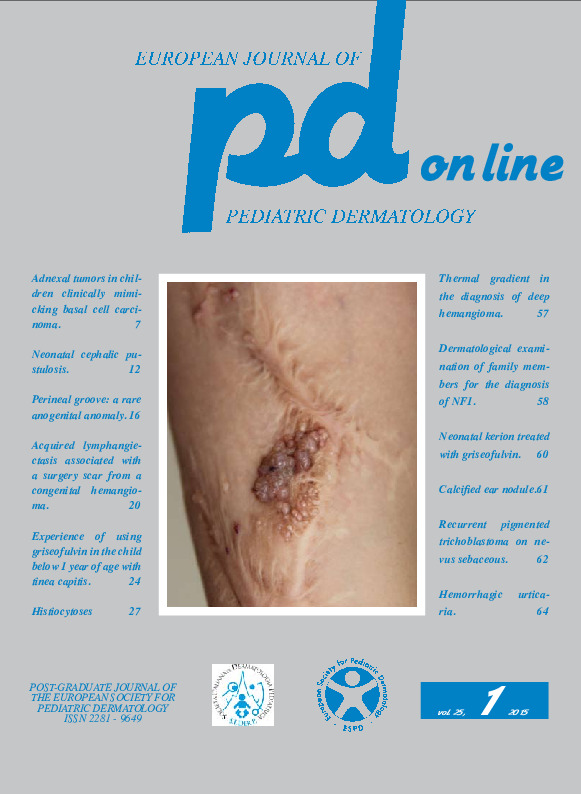Histiocytoses.
Downloads
DOI:
https://doi.org/10.26326/2281-9649.25.1.1088How to Cite
Bonifazi E., Milano A. 2015. Histiocytoses. Eur. J. Pediat. Dermatol. 25 (1):27-52. 10.26326/2281-9649.25.1.1088.
pp. 27-52
Abstract
The histiocytoses are diseases caused by the proliferation of histiocytes in various organs, including the skin; they have a very variable clinical spectrum and prognosis ranging from an often fatal multisystem involvement to a self-healing single lesion in a single organ. The classification of histiocytosis, which is based on the origin cell and malignancy potential, divides them into Langerhans cell histiocytosis (Class I), non-Langerhans histiocytosis (Class II) and malignant histiocytosis (Class III). In each of these classes numerous clinical forms have been described, but these forms according to some Authors only represent different developmental stages of the same disease. Letterer-Siwe disease is the most frequent form among Class I histiocytoses and juvenile xanthogranuloma and Rosai-Dorfman disease are the most frequent forms among Class II Histiocytoses. In Class I histiocytoses the histologic examination is not able to distinguish between severe and mild forms; the observation of the skin lesions can help in this differentiation.Keywords
Histiocytosis

